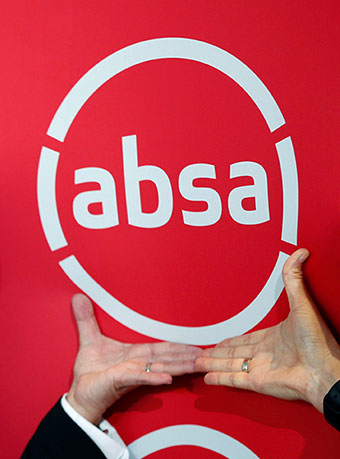Absa’s new CIB representative office in New York will be open before the end of the year, according to James Gregory, chief representative for the bank in New York.
This follows the opening of its London representative office in September 2018, and is part of the South Africa bank’s push to capture new relationships with international investors and multinational companies (MNCs) looking to invest in Africa.
“Regulatory approval at the federal and state level in the US has now been received and we already have the premises, staff and legal and controls frameworks finalized, so we believe that we will be up and running in quick order,” says Gregory.
“America MNCs continue to be interested in the huge growth opportunity in Africa. We can support them through these opportunities.”
Africa is undergoing a demographic transformation. Its population is projected to nearly double in size by 2050 and could quadruple by the end of the century to four billion.
Meanwhile, the financial strength of the middle classes in Africa continues to grow.
According to the Brookings Institution, consumer spending in Africa hit $1.4 trillion in 2015 and will continue to rise to $2.1 trillion by 2025 and $2.5 trillion by 2030. The development of the African Continental Free Trade Agreement could boost spending figures further.
The continent is home to some of the world’s fastest-growing economies, including Ghana and Ethiopia, while its untapped natural resources continue to gather international investor interest – despite a push towards renewable energy investment globally.
The ‘Africa rising’ story appears to be well and truly established.
Gregory highlights the passage of the Better Utilization of Investments Leading to Development (Build) Act and the creation of the new US International Development Finance Corporation (USIDFC) – merging the US’s Overseas Private Investment Corporation (OPIC) with some key private capital functions of the United States Agency for International Development (USAID) – as a game changer for US-Africa investments.
Under the Build Act, USIDFC’s investment cap is $60 billion, more than double OPIC’s current $29 billion funding cap.
It is not clear, however, how much of the available funds will be earmarked for Africa. It will also come nowhere near China’s own $60 billion pledge to Africa, announced during the Forum on China-Africa Cooperation in September 2018.
However, as Zin Bekkali, CEO at London-based emerging and frontier investment firm Silk Invest, says: “The US has lost some ground to China, India and even Russia in Africa, but there is historically a strong base for US-African partnerships, and Absa’s initiative will surely help.
“The potential for improved economic ties between the US and Africa is immense and hope Absa will facilitate the further development of economic interests.”
Carving its own way
|
Peter Enti, |
Another aim of Absa’s office in New York is to rebuild some of the relationships lost after it split from Barclays. In March 2016, the UK bank announced it would sell its 62.3% share in Absa, due in large part to regulatory issues at home, and a weaker South African currency.
“The opening of the Absa office in New York marks the ending of the relationship with Barclays,” says Peter Enti, partner and portfolio manager at Nubuke Investments, an alternative asset manager focused on African markets.
“Absa must now carve its own way forward and ensure it’s on top of the African business in the USA.”
Since the split, Absa has undergone a huge rebranding exercise to separate itself from Barclays, which bought an initial stake in Absa in 2005. Following the acquisition, the bank was renamed Barclays Africa Group Limited.
In New York, we will keep infrastructure as light and right-sized as possible to ensure we keep operating costs efficient with our business model
– James Gregory, Absa
In July 2018, the bank formally changed its name to Absa Group Limited and is in the process of renaming its subsidiaries in Botswana, Ghana, Kenya, Mauritius, Mozambique, Nigeria, Seychelles, Tanzania, Uganda and Zambia.
“When we divested from Barclays, we lost connectivity to our American MNC client base,” says Absa’s Gregory. “Moreover, in the US, Barclays is a well know CIB brand, while Absa is still relatively unknown.
“We will be focusing on marketing Absa Bank’s brand and product capabilities to clients in the US, via sales staff at our representative office in New York.”
The bank will have its work cut out, coming from a low base.
Increase in costs
According to the bank’s latest full-year financial report, Absa’s CIB business increased headline earnings by 2% to R5.9 billion, whereas overall operating costs grew 12% to R8.9 billion in the same period.
“The separation from Barclays PLC has led to an increase in costs as we lose some of the family benefits that we enjoyed as a result of being part of a large global bank – for example, bulk discounts on licence costs,” says Matt Harcourt, chief financial officer for CIB at Absa.
“This cost growth will return to normal levels over time.”
Gregory adds: “In New York, we will keep infrastructure as light and right-sized as possible to ensure we keep operating costs efficient with our business model.
“Our plan is to have four permanent members of staff based in our office in New York who will cover clients across the country as needed. We are cost conscious, are careful with what we are doing and are confident that the benefits of having a representative office in New York will offset any costs related to running the office here.”
Gregory has been a director with the bank since January 2018. He was previously a business manager at Barclays and head of equity derivative operations change for Barclays Investment Bank.


 Signal2forex.com - Best Forex robots and signals
Signal2forex.com - Best Forex robots and signals




